Related Research Articles
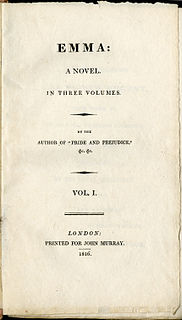
Emma is a novel about youthful hubris and romantic misunderstandings, written by Jane Austen. It is set in the fictional country village of Highbury and the surrounding estates of Hartfield, Randalls and Donwell Abbey, and involves the relationships among people from a small number of families. The novel was first published in December 1815, with its title page listing a publication date of 1816. As in her other novels, Austen explores the concerns and difficulties of genteel women living in Georgian–Regency England. Emma is a comedy of manners.

The dime novel is a form of late 19th-century and early 20th-century U.S. popular fiction issued in series of inexpensive paperbound editions. The term dime novel has been used as a catchall term for several different but related forms, referring to story papers, five- and ten-cent weeklies, "thick book" reprints, and sometimes early pulp magazines. The term was used as a title as late as 1940, in the short-lived pulp magazine Western Dime Novels. In the modern age, the term dime novel has been used to refer to quickly written, lurid potboilers, usually as a pejorative to describe a sensationalized but superficial literary work.
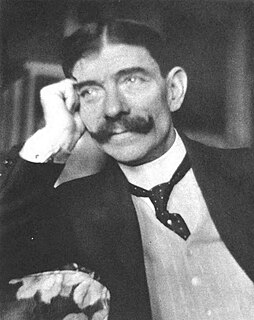
Frank Harris was an Irish-American editor, novelist, short story writer, journalist and publisher, who was friendly with many well-known figures of his day.

Edward Frederic Benson was an English novelist, biographer, memoirist, archaeologist and short story writer.

Sir James Matthew Barrie, 1st Baronet, was a Scottish novelist and playwright, best remembered as the creator of Peter Pan. He was born and educated in Scotland and then moved to London, where he wrote a number of successful novels and plays. There he met the Llewelyn Davies boys, who inspired him to write about a baby boy who has magical adventures in Kensington Gardens, then to write Peter Pan, or The Boy Who Wouldn't Grow Up, a 1904 West End "fairy play" about an ageless boy and an ordinary girl named Wendy who have adventures in the fantasy setting of Neverland.

Frank Gelett Burgess was an American artist, art critic, poet, author and humorist. An important figure in the San Francisco Bay Area literary renaissance of the 1890s, particularly through his iconoclastic little magazine, The Lark, he is best known as a writer of nonsense verse, such as "The Purple Cow", and for introducing French modern art to the United States in an essay titled "The Wild Men of Paris". He was the author of the popular Goops books, and he coined the term "blurb".
Richard Thomas Condon was an American political novelist. Though his works were satire, they were generally transformed into thrillers or semi-thrillers in other media, such as cinema. All 26 books were written in distinctive Condon style, which combined a fast pace, outrage, and frequent humor while focusing almost obsessively on monetary greed and political corruption. Condon himself once said: "Every book I've ever written has been about abuse of power. I feel very strongly about that. I'd like people to know how deeply their politicians wrong them." Condon's books were occasionally bestsellers, and a number of his books were made into films; he is primarily remembered for his 1959 The Manchurian Candidate and, many years later, a series of four novels about a family of New York gangsters named Prizzi.
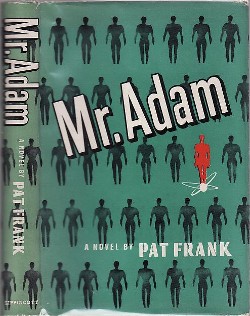
Mr. Adam (1946) is the first novel written by Pat Frank, dealing with the effects of a nuclear mishap causing worldwide male infertility. Published by J. B. Lippincott Company, it was also released as an Armed Services Edition, a paperback by Pocket Books in 1948, and again in 1959 by Pocket Books with the tag Mr. Adam Was Wanted By Every Woman in the World. All told, it sold over 2 million copies.

John Lane was a British publisher who co-founded The Bodley Head with Charles Elkin Mathews.
The Hardy Boys: Undercover Brothers is a detective fiction series of books published by Aladdin Paperbacks, which replaced The Hardy Boys Digest paperbacks in early 2005. All the books in the series have been written under the pen name of Franklin W. Dixon.
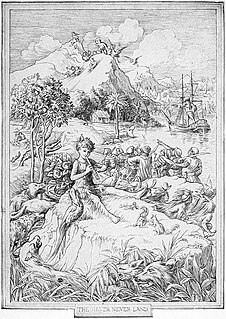
Peter Pan is a fictional character created by Scottish novelist and playwright J. M. Barrie. A free-spirited and mischievous young boy who can fly and never grows up, Peter Pan spends his never-ending childhood having adventures on the mythical island of Neverland as the leader of the Lost Boys, interacting with fairies, pirates, mermaids, Native Americans, and occasionally ordinary children from the world outside Neverland.

Joseph Crosby Lincoln was an American author of novels, poems, and short stories, many set in a fictionalized Cape Cod.
Weldon J. Cobb was a Chicago author, reporter and newspaper editor. From 1877 through 1880 he sold fifteen stories to Nickel Library, and from 1891 through 1895 Cobb regularly contributed stories to Golden Hours.
Herbert George Jenkins was a British writer and the owner of the publishing company Herbert Jenkins Ltd, which published many of P. G. Wodehouse's novels.
Bernard G. Marshall was an American writer. His historical novel Cedric the Forester was one runner-up for the inaugural Newbery Medal in 1922.
Grace May North (Monfort) was a newspaper journalist and author of novels for children and adolescents, stories which featured both girl and boy protagonists. She wrote primarily under her birth/'maiden' name Grace May North although some of her later novels were also republished under the pen-name Carol Norton.
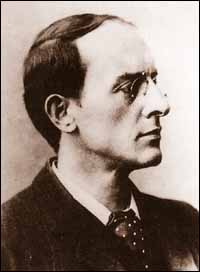
Walter Stanley Paget was an English illustrator of the late 19th and early 20th century, who signed his work as "Wal Paget". Paget held a gold medal from the Royal Academy of Arts, and was the youngest of three brothers, Henry M. Paget (eldest) and Sidney Paget, all illustrators.
Harry Collingwood was the pseudonym of William Joseph Cosens Lancaster, a British civil engineer and novelist who wrote over 40 boys' adventure books, almost all of them in a nautical setting.

Behind the Scenes in Slaughter-Houses is a 1892 pamphlet on animal slaughter by H. F. Lester.
References
- 1 2 University of Missouri-Kansas City’s The Webster Series
- 1 2 John Axe, All About Collecting Boy’s Series Books, page 15, Hobby House Press, 2002
- 1 2 3 4 James D. Keeline, Frank V. Webster article
- ↑ Snellenburgs advertisement The Philadelphia Inquirer, December 11, 1921, page 48